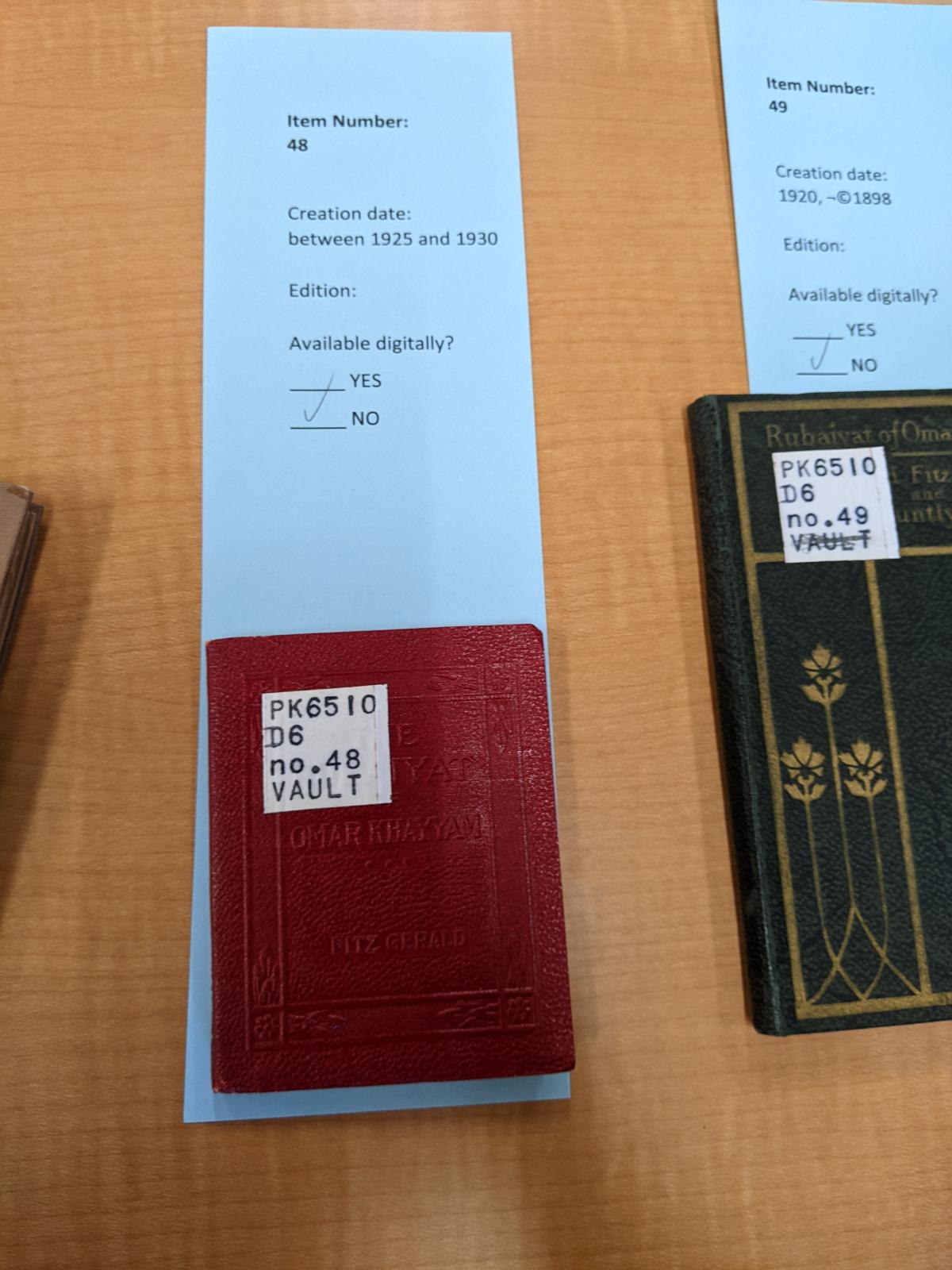This little red book at first looks unread. The spine isn’t cracked, there’s only minimal bending of the leather cover at the corners, and the pages are all in good condition. Then, as one looks closer at the details, it becomes clear that someone cared enough about this poem, about this gift, to carry it with them. It’s only ten centimeters by eight centimeters, only 96 pages—a perfect pocket-edition of the Rubáiyát of Omar Khayyám. There’s no publication date or indication of edition on the book, but it’s estimated that this book was created sometime between 1925 and 1930.
The construction is simple: a single sheet of red faux leather is beautifully embossed on the front, with the title on the center front and along the spine. The pages are glued directly to the cover. This paper is a bit heavy for the size of the book. It’s stiff, though not obviously thick, and it’s kept the texture of the fabric from the creation of the paper.
Inside the book, many of the rubáiyát are illustrated with woodcut illustrations. The ink of the illustrations appears to be a different ink from the text. Where some of the text has faded slightly, the saturation of the illustrations is deep and seems to be in perfect condition. (See third image)
These pages have the quintessential “old book” smell: sweet and slightly dusty. Each page is numbered. The lines of text are all straight, with the accents included in the typeface. Although the ink of the text isn’t in as pristine shape as the illustrations, great care was taken to create an easy-to-read, high-quality text. None of the rubáiyát are hanging; they don’t begin on one page and end on another for the sake of saving room. This is fascinating, because the outside of the book shows less care in its creation and we all know a book is judged first by its cover.
Looking at the outside of the book, the spine has a slight twist to it, the signatures are no longer in line, and the outside edges of the paper are more yellowed than the pages. (See fourth and fith images) This is likely all wear and tear from the book’s long life. The cover looks to be real leather at first. When you take a closer look at the corners, the red dye has been worn away, revealing the warp and weft. The embossment on the front cover is just slightly off-center. It’s just enough to be visible to the careful eye. The embossment on the spine appears to be well-centered. The back, however, has an embossment that is noticeably off-center. This implies lower quality, which is odd because of the materials and precision used for the signatures, text and illustrations.
Interestingly, the back cover of the book has an embossed name on it: “Little Luxart Libary.” (See second image) But the publisher is listed on the title page as “Robert K. Has, inc., publishers, (Formerly Little Leather Library Corporation)[.]” This begs the question, where does this third name come from and what does it refer to?
Before Little Leather Library Corp. was purchased and renamed, they found their initial success selling tiny copies of Shakespeare in boxes of chocolate. After they were purchased and renamed, the market shifted. From 1924 to 1926, Robert K. Has, inc. sold the Little Luxart Libary, a collection of thirty books. This copy of the Rubáiyát of Omar Khayyám is one of thirty, then! This begs the question: “Where are the other twenty-nine books?”






